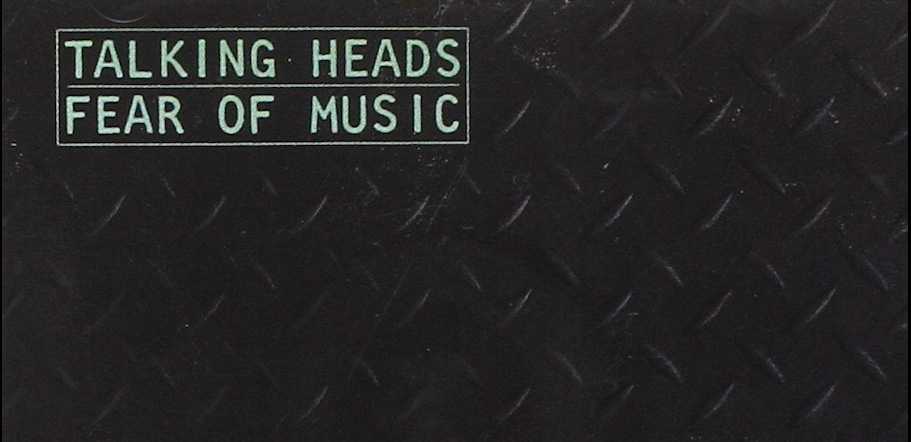Talking Heads’ ‘Fear of Music’ turns 40

Talking Heads
Fear of Music
Sire Records · August 3, 1979
“To shake your rump is to be environmentally aware.”
– David Byrne
Born out of art school academia and the first wave punk scene at CBGB’s, Talking Heads was a group armed with intellectualism and intention. Unlike their New York City contemporaries, the Heads weren’t interested in the three power-chord formula that hallmarked the punk movement. Rather, band leader David Byrne penned stripped-down rock songs with more emphasis on groove and lyricism. Thanks to charting singles like “Psycho Killer” and “Take Me To The River,” the band had successfully put the music industry’s head on a swivel. Moreover, record executive Seymour Stein worked to distance the Heads from the negative connotations of punk by convincing the press to rebrand the group as the embodiment of the much trendier “new-wave”. The marketing scheme worked, and Talking Heads were all the rage. Despite the successful start, the band still had bigger aspirations in mind.
When it came to write and record their third record, Byrne was looking to push the Heads into more experimental territory. In a move that would usher in the group’s most productive era, they decided to give more creative control to their producer, the already legendary Brian Eno. Talking Heads was prepared to embark on their most ambitious venture yet and make the crossover to a full-on dance band. Conceptual, paranoiac and irrepressibly groovy, Fear of Music was the first undeniable masterpiece from David Byrne and co.
Roaring out of the gates on track one, “I Zimbra” shatters any preconceived ideas fans may have had about Talking Heads. The record immediately challenges listeners with polyrhythms inspired by Nigerian funk icon Fela Kuti. Tina Weymouth’s bass furiously slaps around while Jerry Harrison shreds an incendiary groove. It’s a jarring opener, but it constructs the chaotic framework of the album. Moving forward, “Mind” rocks to a driving bass thump and prickly, staccato guitar lead. The back to back anthems “Cities” and “Life During Wartime” are uptempo pump-up jams urging the audience to move. On these two singles, the riffs are huge, complemented with Byrne’s preacher-like delivery. Across the record, the Head’s phenomenal musicality is elevated to transcendent heights with additions brought to the table by Brian Eno. Nearly every song features his strange synth sounds and left-field percussive elements. It is these little strokes of oddball genius that add up in a big way: for the first time the avant-garde was blatantly infused with dance music.
Thematically, Fear of Music documents Byrne’s gradual descent into a full on nervous breakdown. As mentioned earlier, “I Zimbra” sets the unhinged tone of the record musically, but also lyrically, as it is composed of made-up words. It may seem that the choice to use made up words for lyrics is an example of Byrne and Eno indulging in art school pretension, but a closer inspection of the record’s liner notes reveals songwriting credit to an “H. Ball.” Hugo Ball was a poet and founder of Dadaism, an anti-art movement that celebrated meaninglessness at the height of World War I. With this in mind, “I Zimbra” transforms into a desperate cry for clarity and order. On “Mind”, Byrne laments about a person unwilling to listen to him. The subject of the song disregards time, money, religion, science and more. “Cities” is equally unnerving and humorous. In this vignette, the subject of the song would desperately like to “find a city to live in.” Perhaps a safe home is all Byrne needs to alleviate his paranoia. Up next the hypnotic centerpiece of the album, “Life During Wartime,” is not only the most danceable song on Fear, but the most vivid in its portrait of mass paranoia. Lyrics like “You oughta know not to stand by the window/someone will see you up there” and “I’ve got three passports, couple of visas/you don’t even know my real name” speak for themselves.
If Fear of Music is an autobiographical account of Byrne’s descent into a full on nervous breakdown, the second half of the record requires some sympathy. On Fear’s B-side, Byrne doubles down on the anxiety. When people get scared, a common consoling phrase is to “just breathe.” As it would turn out, that kind of advice simply won’t cut it for David Byrne. Beginning with “Air,” fittingly the most ethereal track on Fear, he proclaims that even oxygen could be poisoning us, slowly deteriorating our bodies. That’s followed by the deceptively existential ballad “Heaven,” which is described as a bar where “nothing ever happens.” It’s a paralyzing song if it catches a listener off-guard. The final stretch of the record plunges into the absurd as Byrne grapples with basic existence. The finale, “Drugs,” finds him in his most troubled state of mind yet. Strung out and scared, he can’t make sense of even the most basic interactions around him. To make matters worse, for the first and only time, the music on Fear is too slow to dance to! (Perhaps that’s the real problem at hand.)
Ultimately, Fear of Music gloriously ushered in Talking Heads’ most artistic era. The marriage of ambitious musicality and haunting stories made for an undeniably groundbreaking statement. However, the question remains: what message does David Byrne want the audience to walk away with? Are there good reasons to be living in perpetual fear? Unlikely. After all, this is the same man who gave a talk at SXSW this year on the joy of life. Perhaps Byrne is suggesting that instead of over-analyzing all of the inexplicable things life throws our way, we’d be better off dancing with friends, or even by ourselves. After all, Byrne’s ideal version of heaven is a bar where “the band […] plays [his] favorite song.”